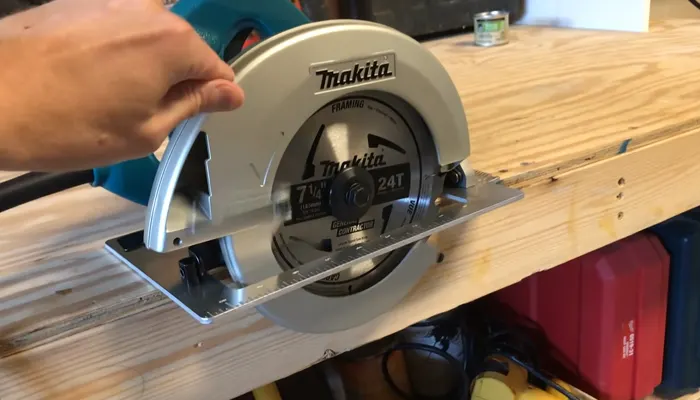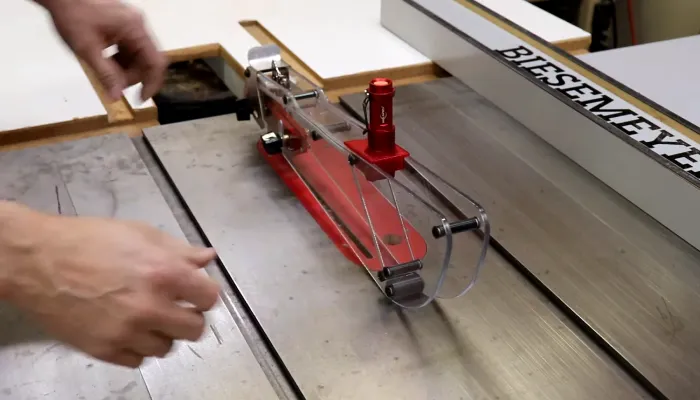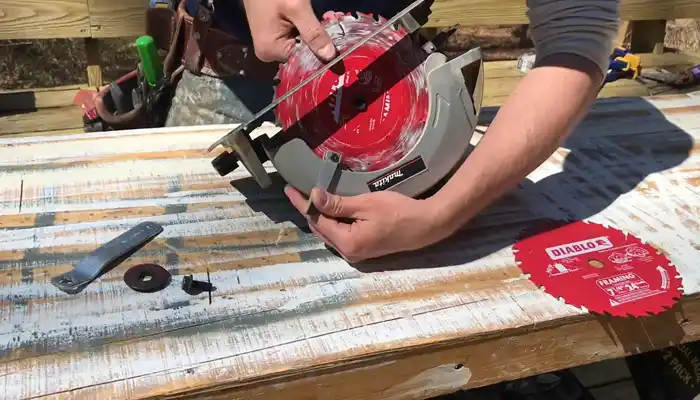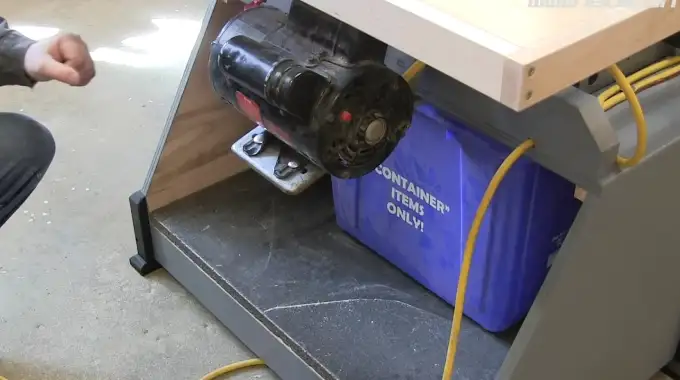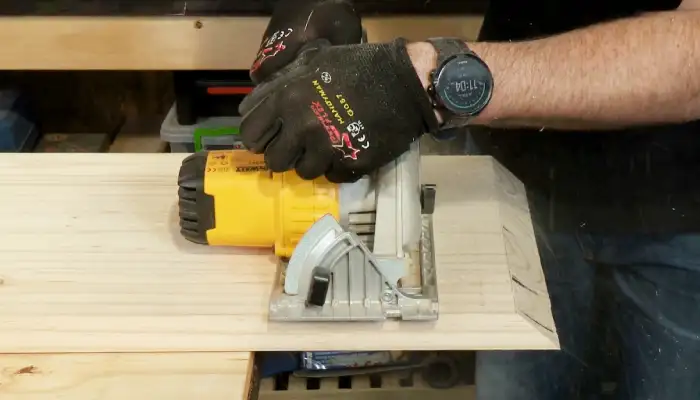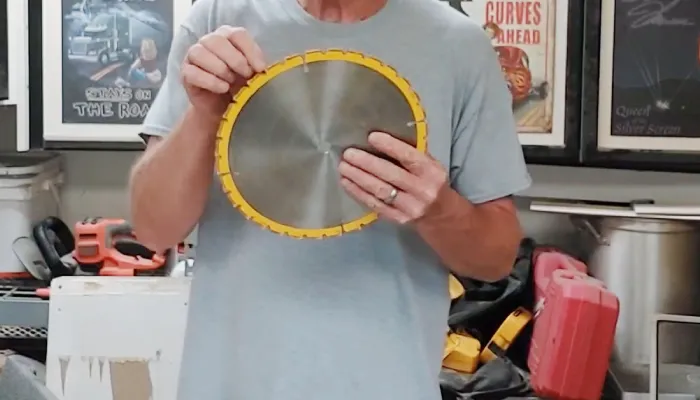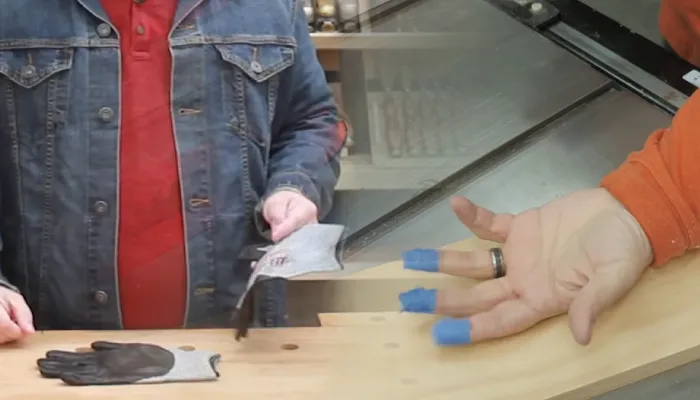Why Circular Saw Smoking: 7 Reasons
Circular saws are essential for woodworking, but when you notice your circular saw producing smoke during operation, it’s a sign that something is amiss. Understanding the underlying causes of circular saw smoking is crucial for both safety and performance.
Well, a dull circular saw blade is a major cause of smoking. Also, cutting too many materials at once, using the wrong saw blade, and misalignment or wobbling blades are related to this issue.
A smoking circular saw can result in inefficient cutting and burning or charring of the material. But don’t worry, I’m here to shed some light on the mystery of why your circular saw is smoking and how you can fix it. So let’s discuss.
Major Reasons Why Circular Saw Smoking and Solutions
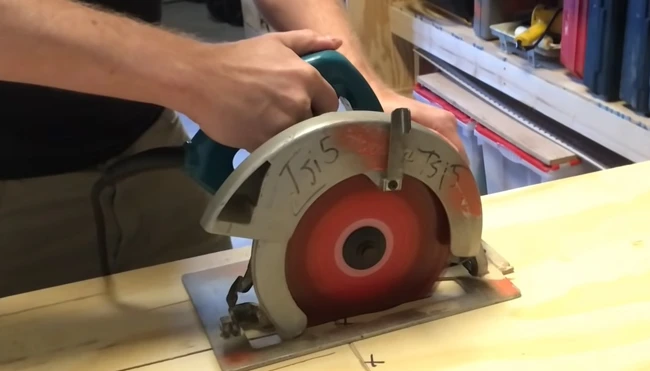
In the following sections, I’ll explain the major reasons why a circular saw starts smoking and suggest solutions to fix it.
- Dull circular saw blade
- Improper feed rate
- Using the wrong saw blade
- Misalignment or wobble blade
- Motor problems
- Dirty circular saw blade
- Insufficient saw teeth
1. Dull Circular Saw Blade
A dull blade is the primary reason for a smoking circular saw. Over time, the teeth of a circular saw blade can become dull due to slower cutting speeds, leading to smoking. Regularly inspecting the sharpness of a circular saw blade is crucial in preventing smoking and ensuring smoother cuts.
To check if a blade is dull, run a finger along the edge or observe if the saw is difficult to push through the timber. If the blade is dull, it must be sharpened or replaced to prevent smoking and achieve smoother cuts.
Sharpening the blade can be done using a file or a specialized sharpening tool, following the manufacturer’s instructions. Remember, a sharp circular saw blade is essential for efficient, smooth, and safe cutting operations.
2. Improper Feed Rate
Slow cutting or applying excessive force can significantly increase friction, leading to smoking. When the feed rate is too slow, the blade can become overloaded, resulting in excessive friction and heat generation. Conversely, feeding the material too quickly can cause the blade to bind and stall, leading to smoking.
To avoid these issues, find the right balance between the feed rate and the cutting speed. Start by ensuring that the saw is properly aligned with the material and then gradually increase the feed rate while monitoring the saw’s performance. Adjust as needed to maintain a smooth and efficient cutting process.
3. Using the Wrong Saw Blade
Selecting an improper saw blade can also lead to smoking issues. The choice of the saw blade should match the type of cut and the thickness of the wood.
To avoid smoking issues with a circular saw, ensure the correct saw blade is used for the specific task. For cross-cutting, blades with more teeth are ideal, while thicker timber may require blades with fewer teeth.
4. Misalignment or Wobble Blade
Another common cause of circular saw smoking is a misaligned or wobbling blade, which can be fixed by properly aligning the blade. A wobbling saw blade can create wider cuts and leave burn marks on the workpiece.
To fix this issue, make adjustments to ensure the blade runs smoothly and accurately. First, ensure that the saw is turned off and unplugged. Then, use the appropriate tools to adjust the blade’s alignment, following the manufacturer’s instructions.
5. Motor Problems
I discovered that a nearly burnt-out motor can be one of the reasons why a circular saw may start smoking. When the motor fails, it can emit a strong smell and produce smoke.
Unfortunately, motor issues are usually beyond repair, and it’s unsafe and inefficient to continue using a saw with a malfunctioning motor. In such cases, it becomes necessary to replace the circular saw entirely.
6. Dirty Circular Saw Blade
One contributing factor that can cause a circular saw to smoke is a dirty blade. Over time, dust and rust can accumulate on the blade’s surface, leading to increased friction and heat during cutting. This buildup not only affects the saw’s performance but also poses a safety risk.
To fix this issue, keep the saw blade clean. Regularly remove dust and debris using a blade cleaning solution or a wire brush. This cleaning ensures smoother cuts, reduces heat generation, and prevents smoking.
7. Insufficient Saw Teeth
When the saw blade lacks sufficient teeth, it can result in inefficient cutting and increased friction, leading to smoking. This occurs because the blade cannot effectively remove the cut material, causing it to accumulate and overheat.
For smoother and more efficient cutting, it’s recommended to use a circular saw blade with a higher tooth count. The increased number of teeth will allow for better chip removal and reduce the likelihood of smoking.
Consequences of a Smoking Circular Saw
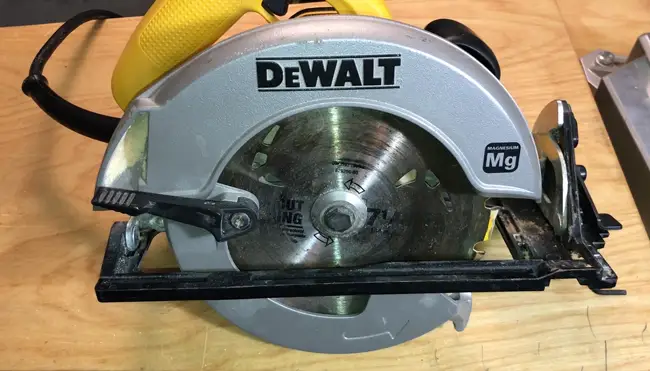
When a circular saw starts smoking, it’s crucial to understand the consequences that can arise.
1. Reduced Cutting Efficiency
Using a smoking circular saw reduces cutting effectiveness and prolonged project completion times due to excessive friction and heat generation.
When the saw blade smokes, it indicates it is encountering resistance and isn’t cutting efficiently. The excessive friction and heat generated by the saw blade can cause the wood or material to burn or char, leading to a lower-quality cut.
Additionally, the increased friction can cause the blade to dull more quickly, reducing its cutting efficiency. As a result, the cutting process becomes slower and less precise, leading to longer project completion times.
2. Poor Quality Cuts
As I continue discussing the consequences of a smoking circular saw, it’s crucial to address the poor quality cuts caused by this problem.
When a circular saw smokes, it can leave burn marks on the cut edges of materials. These burn marks not only detract from the visual appeal of the workpiece but they can also compromise its structural integrity.
Poor quality cuts can weaken the material, making it more prone to breakage or failure. Additionally, the burn marks can affect the fit and finish of the workpiece, making it difficult to achieve precise measurements and alignments.
3. Safety Hazards
When a circular saw starts smoking, it indicates overheating. This can lead to several dangerous consequences.
- Firstly, the heat generated can cause the blade to warp, resulting in inaccurate cuts and potential kickbacks.
- Secondly, the excessive heat can deform the workpiece, compromising its structural integrity and potentially causing it to break apart.
- Moreover, the smoke emitted from the burning wood contains harmful fumes that can harm our health when inhaled.
- In extreme cases, the combination of heat and smoke can even lead to a fire, posing a serious risk to property and personal safety.
4. Tool Damage
A smoking circular saw can cause significant damage to its blade, motor, and internal components, leading to costly repairs or replacements. The high temperatures can cause the saw blade to warp or lose its sharpness, resulting in poor cutting performance and the need for blade replacement.
The motor, which is responsible for powering the saw, can also be severely affected by the excessive heat. The insulation around the motor coils may melt, causing short circuits and potential motor failure.
Also, the internal components, such as bearings and gears, can suffer from heat damage, leading to increased friction, reduced efficiency, and, ultimately, premature tool failure.
5. Material Wastage
There is a possibility of imprecise cuts and material damage caused by a circular saw that is smoking. These defects can render the materials unusable and require them to be discarded. Burn marks left by a smoking circular saw can compromise the integrity of the cut, making the material unfit for its intended purpose.
Also, the imprecise cuts caused by a smoking circular saw may not fit together properly, resulting in the need for extra material or rework. This material wastage not only increases project costs but also extends the project timeline, causing delays and affecting overall productivity.
Why is the wood smoking when I cut it with a circular saw?
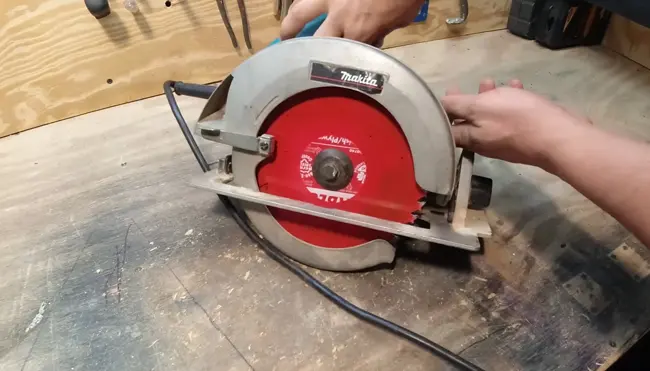
The smoking is caused by the friction between the blade and the wood, which generates heat. When the heat builds up, it can lead to burn marks on the wood surface. The solution to this issue is simple: cut the wood faster.
By reducing the time the blade stays in contact with the wood, you can minimize the heat buildup and prevent smoking. It’s important to maintain a steady cutting speed to ensure efficient and clean cuts without scorching the wood.
What should I do if I notice smoke coming from my circular saw during a cut?
If you notice smoke coming from your circular saw during a cut, immediately stop and assess the situation. Continuing to use a smoking saw can be hazardous and could cause damage to the tool.
Start by checking the blade for any signs of dullness, dirt, or misalignment. If necessary, clean or replace the blade to ensure optimal performance. Also, confirm that you’re using the correct blade and avoid forcing the saw through the material.
Fixing a Smoking Circular Saw Safely
A smoking circular saw can result from various factors, such as a dull blade, excessive cutting speed, or incorrect blade installation. It’s essential to address this issue promptly to avoid potential consequences like damage to the tool or even personal injury.
If you follow the appropriate troubleshooting steps and ensure the proper maintenance I discussed above, you can quickly fix the smoking issue and continue using your circular saw safely and efficiently.
Also, remember that proper wood selection and adherence to recommended cutting speeds contribute to a smoke-free circular saw experience. Addressing these issues promptly will not only improve safety but also prolong the life of your circular saw.

